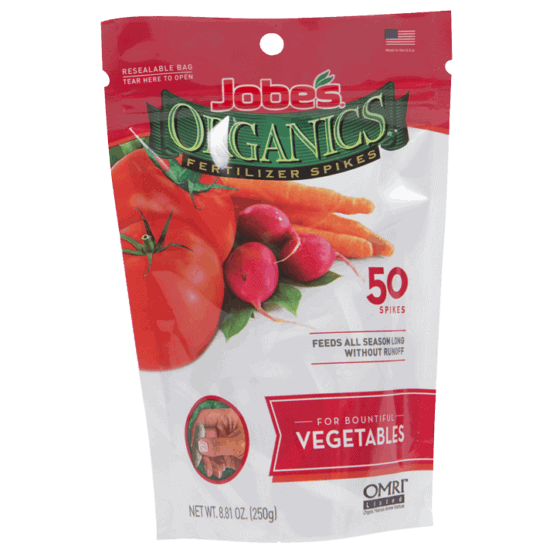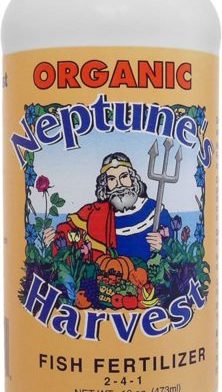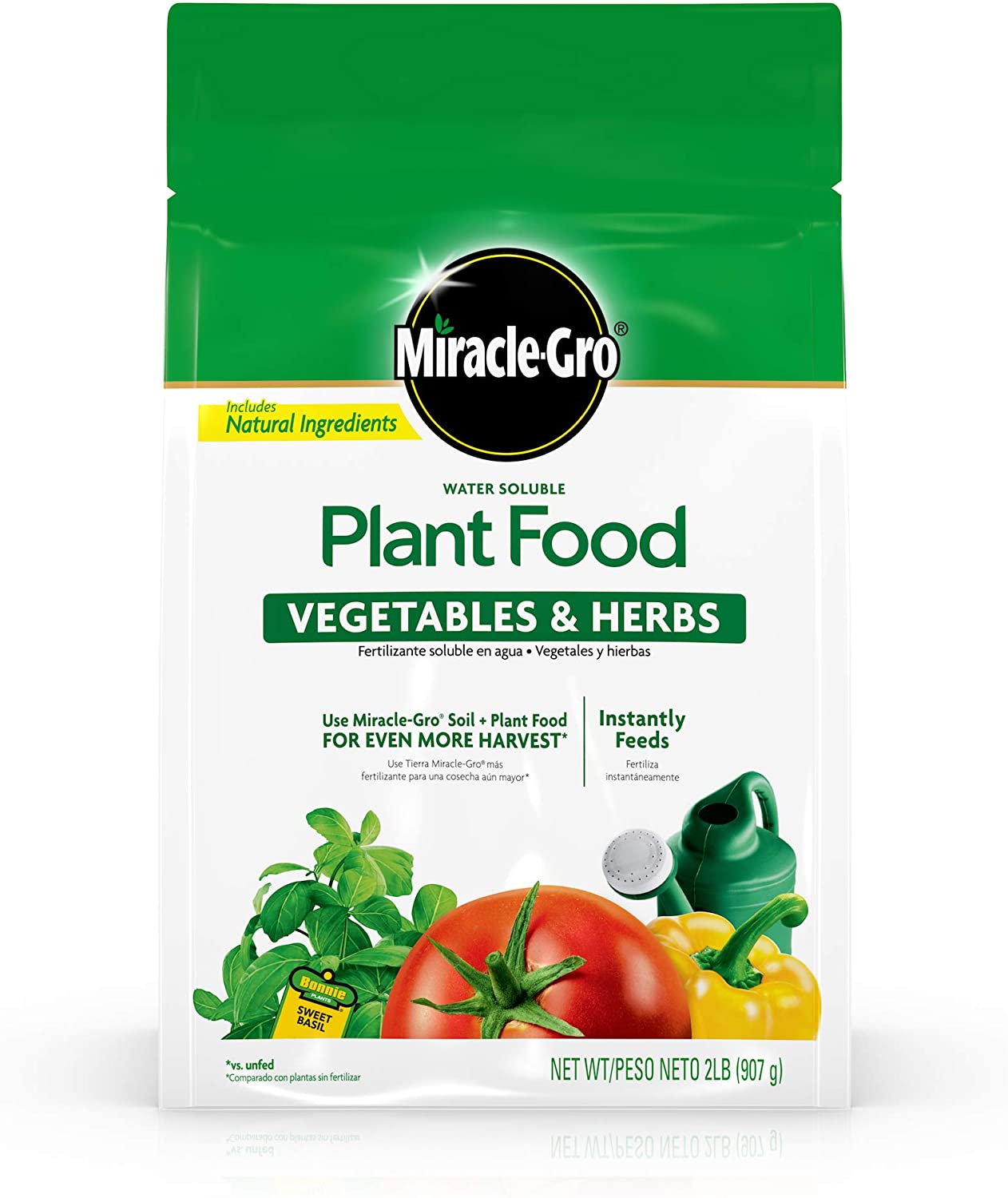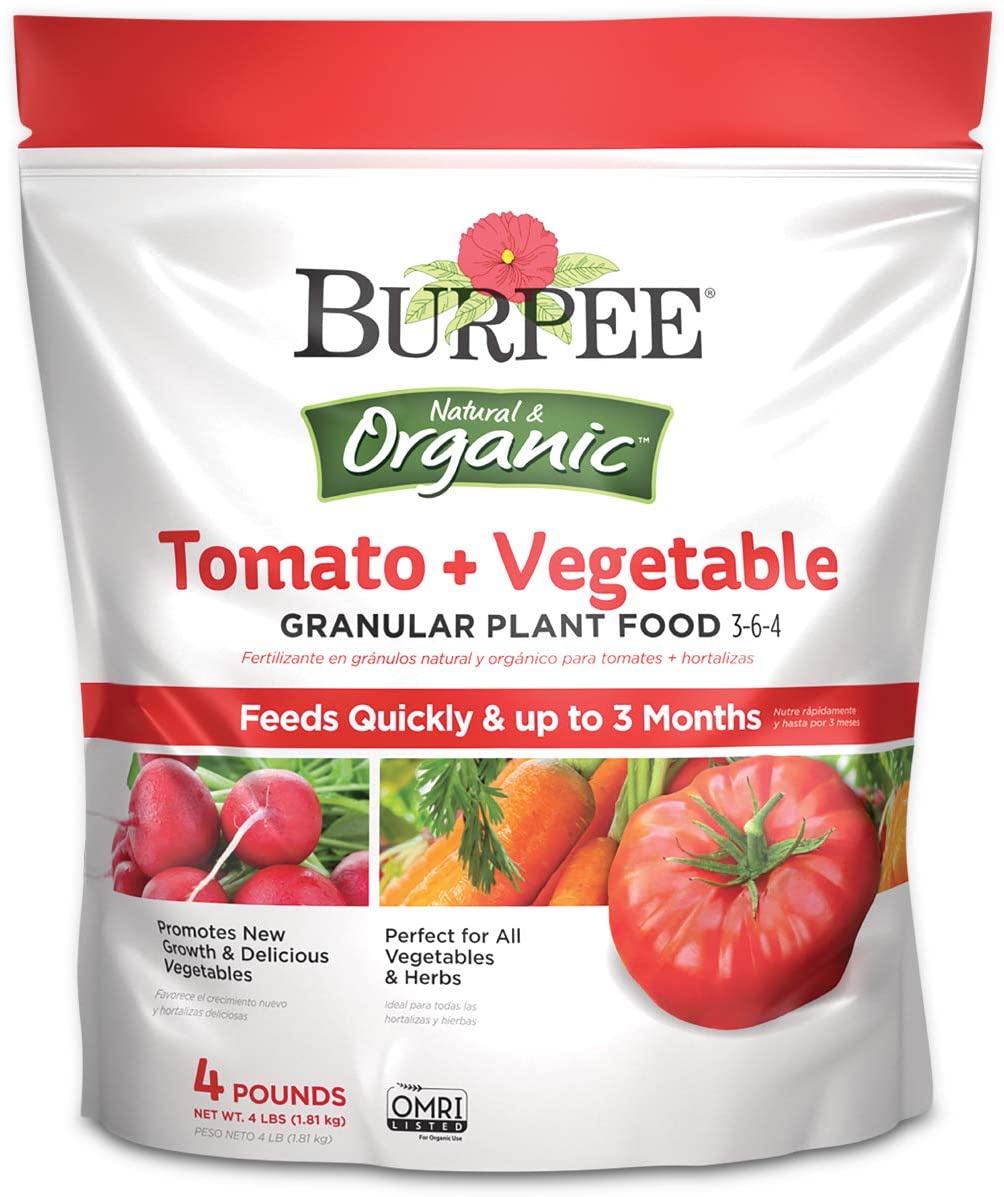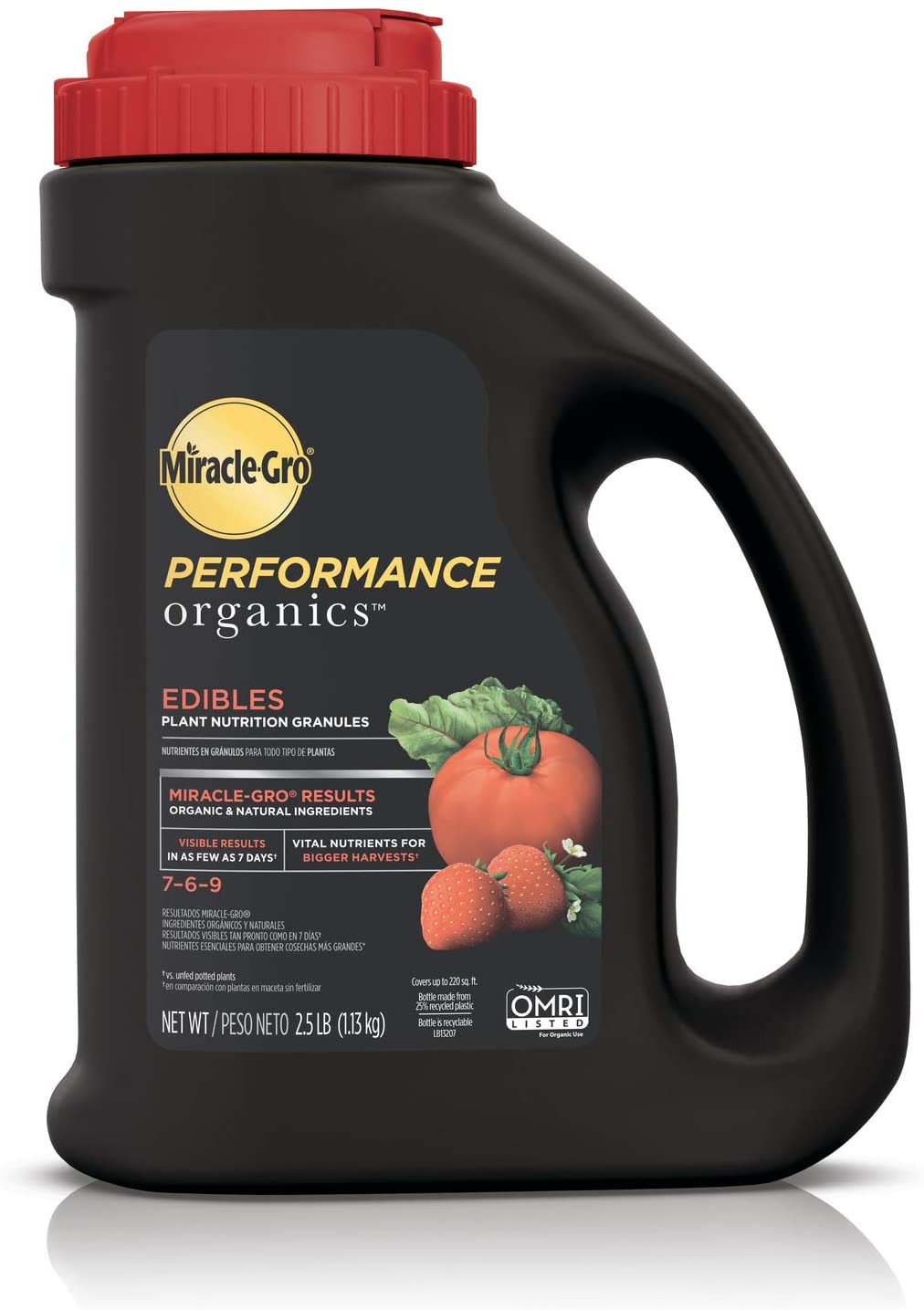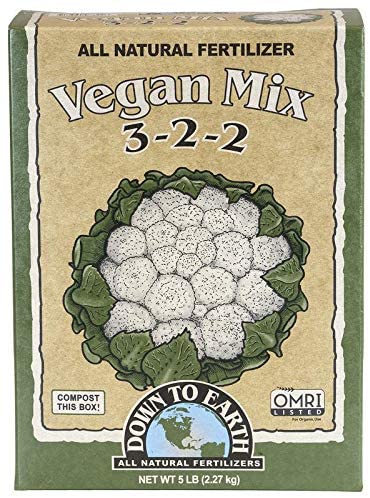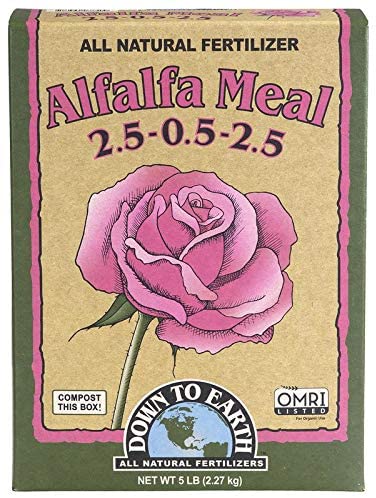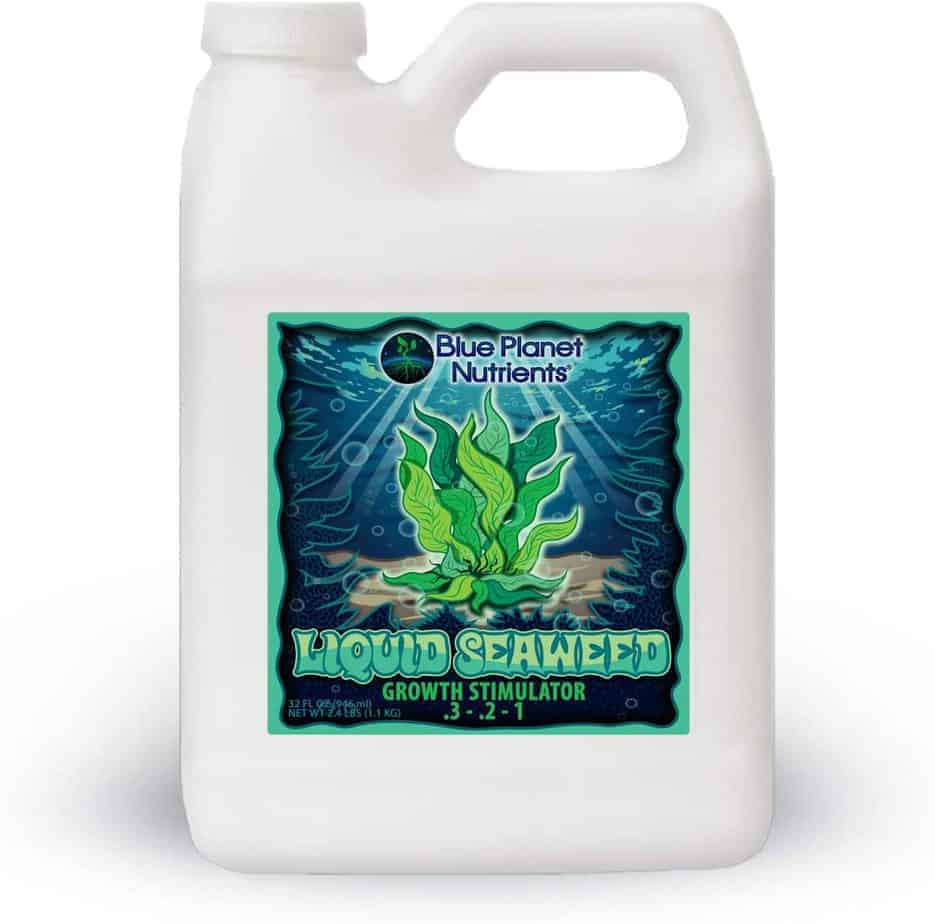Zucchini plants are heavy feeders. Once they start growing their first true leaves, they take off and grow rapidly, and need enough nutrients to support that growth and push heavy blooms.
There are so many fertilizers out there, even seasoned gardeners can be paralyzed with choice. What’s good for zucchinis? Can you use any kind of fertilizer?
Certainly, any balanced, all-purpose fertilizer can work, but if you want to give your zucchini plants all the nutrients they need to thrive and produce a bountiful harvest, you will want to use fertilizers that are formulated for fruiting vegetables. A lot of the fertilizers below are labelled as “tomato” or “vegetable” fertilizers, because tomatoes and other vegetables like peppers and cucumbers have nearly the same nutrient requirements as zucchinis.
On this page:
List of Fertilizers for Zucchinis
Summary
|
Zucchini Fertilizer |
NPK |
Type |
|
|
10-5-15 |
Hybrid Organic, Granular |
|
4-6-3 |
Organic, Contains Beneficial Microbes |
|
|
6-18-6 |
Fertilizer Spikes |
|
|
2-7-4 |
Organic, Fertilizer Spikes |
|
|
2-4-1 |
Organic, Liquid Feed |
|
|
18-18-21 |
Liquid Feed |
|
|
3-6-4 |
Organic, Contains Beneficial Microbes |
|
|
|
7-6-9 |
Organic, Granular |
|
3-2-2 |
Organic, Plant-based |
|
|
2.5-0.5-2.5 |
Organic, Plant-based |
|
|
0.3-0.2-1 |
Organic, Plant-based |
|
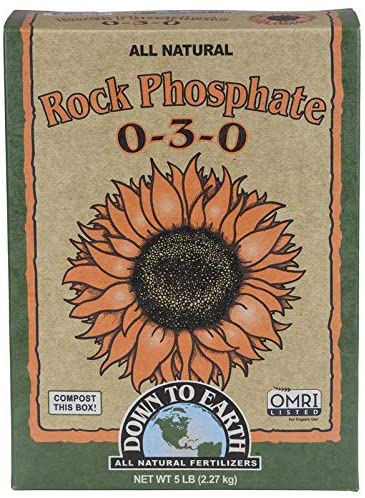 Down To Earth All Natural Organic Rock Phosphate Fertilizer Down To Earth All Natural Organic Rock Phosphate Fertilizer |
0-3-0 |
Phosphate Fertilizer (supplement with plant-based fertilizers) |
1. Miracle-Gro Shake ‘N Feed Tomato, Fruit & Vegetable Plant Food
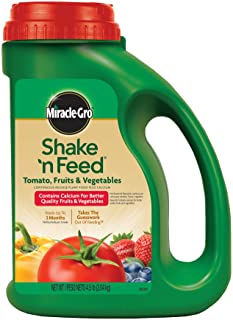
- 10-5-15 NPK
- Continuous Release and Fast Acting
- Hybrid Organic
One common theme you will find with most of these fertilizers is how easy they are to apply. In this case, you quite literally only need to shake some Miracle-Gro Shake ‘N Feed around the soil like you would a salt shaker.
Miracle-Gro Shake ‘N Feed is an example of a hybrid-type of fertilizer that has both ready-to-absorb nutrients that percolate into the soil after each watering and organic nutrient sources such as kelp, earthworm castings, feather meal, and bone meal which will break down into nutrients that your plants can use.
This means that Miracle-Gro Shake ‘N Feed will start working instantly to feed your plants, but will also last a long time before requiring refertilizing – up to 3 months.
With an NPK of 10-5-15, this fertilizer has enough nitrogen to support the growth of massive zucchini leaves while also giving plenty of phosphorus and potassium for strong roots and healthy zucchinis. It’s formulated with a lot of calcium, around 5.6% by weight, which is critical for healthy fruiting in all vegetables, especially those that grow quickly like zucchini. It will also supply enough micronutrients, such as iron, manganese, magnesium, sulfur, and zinc to prevent deficiencies, especially if your soil is poor or you’re using sterile potting mix.
How to apply: Shake dry fertilizer granules evenly around the plant, avoiding touching the stem or leaves, around 1 tablespoon per square foot (package includes an illustration). You can also mix it into potting mix before planting container zucchinis. After applying it, work it into the top 1 to 3 inches of soil and water. It should continue feeding your zucchinis for up to 3 months.
2. Dr. Earth Organic Tomato, Vegetable & Herb Fertilizer
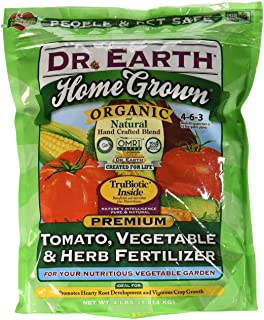
- 4-6-3 NPK
- Continuous Release
- Organic
- Contains Beneficial Microbes
If you want to go 100% organic, one of the most comprehensively formulated fertilizers on the consumer market is Dr. Earth Organic Tomato, Vegetable & Herb Fertilizer. With an NPK of 4-6-3, it’s excellent for fruiting vegetables, but it’s gentle enough to be used for all kinds of vegetable (zucchinis, tomatoes, peppers, potatoes, carrots, broccoli, beans, herbs, etc.) without burning them.
The main reason I recommend Dr. Earth is because it’s not only organic, derived from plant, animal, and mineral sources such as fishbone meal, feather meal, alfalfa meal, rock phosphate, and kelp meal, but it also has been inoculated with beneficial bacteria and fungi. This is something most fertilizers don’t have.
Why are beneficial microbes important? The main reason is that it’s microbes that break down organic matter into nutrients that plants can use. Plants cannot ready absorb the nutrients in kelp meal, for example, but bacteria and fungi eat the kelp meal and release the nitrogen, phosphorus, potassium, and trace minerals inside for plant roots to take up. The other reason is that some beneficial fungi (called mycorrhizae) actually form a symbiotic relationship with plant roots, enhancing the absorption of water and nutrients.
Because it takes time for these beneficial microbes to do their work, and zucchini plants are fast growers, Dr. Earth’s boost to soil life right where the zucchinis are growing means they can have everything they need to thrive.
How to apply: You can apply Dr. Earth every other month throughout the growing season. Before planting: Mix 1 1/2 cups for every 10 sq ft of soil, or 8 cups per 50 ft row. If planting zucchini in a container, mix 1/4 cup per 5 gallons of potting soil and mix in thoroughly, then water. For established zucchini plants: Mix 1 1/2 cups for every 10 sq ft of soil, or 8 cups per 50 ft row. For container zucchinis, apply 1/4 cup per 5 gallons and work into the top few inches of potting mix, then water.
3/4. Jobe’s Tomato Fertilizer Spikes (Regular and Organic)
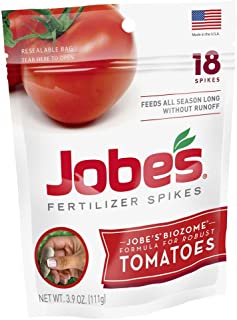
- 6-18-6 NPK (Regular spikes) / 2-7-4 (Organic spikes)
- Continuous Release (Up to 2 Months)
- Organic (Jobe’s Organics only)
A personal favorite, Jobe’s Tomato Fertilizer Spikes and Jobe’s Organics Vegetable & Tomato Fertilizer Spikes are an underrated fertilizer in the garden. These fertilizer spikes are thick, so they break down more slowly in the soil, requiring reapplication only once every two months.
The reason why both the regular and organic spikes are included is because both excel at growing vegetables, whether you need to go fully organic or not. I’ve already written about why I use Jobe’s tomato spikes for peppers, and the same goes for zucchinis.
Both regular and organic Jobe’s spikes are formulated for fruiting vegetables like tomatoes, peppers, eggplants, cucumbers, and zucchinis, with NPK values of 6-18-6 for the regular spikes and 2-7-4 for the organic spikes. The lower values on the organic spikes means it’s a much gentler fertilizer, and you can add more spikes around your zucchinis.
Since soil microbes are required to break down organic fertilizers, if you are using sterile potting mix, you should use the regular spikes. Otherwise, both regular and organic will work well in your garden, whether in garden beds or in containers with compost.
How to apply: For all fertilizer spikes, apply them equally spaced around the zucchini plant. Jobe’s Tomato Fertilizer Spikes: Apply early in the season after transplanting. Use 2 spikes per plant and stick them 1 inch into the soil around 6 to 8 inches from the base of the stem, then water. Reapply 2 spikes every 8 weeks during the growing season. Jobe’s Organics Vegetable & Tomato Fertilizer Spikes: Place 4 spikes early in the season, 1 inch into the soil, 6 to 8 inches from the base of the stem, then water. Later in the season, you can increase the spikes to 8 to 16, depending on the size of your zucchini plant (e.g. zucchini plants greater than 18 inches in diameter can get up to 16 organic spikes).
5. Neptune’s Harvest Fish Fertilizer

- 2-4-1 NPK
- Liquid Feed
- Continuous Release and Fast Acting
- Organic
Native Americans used to bury fish where they planted vegetables in order to increase yields. This concept is still used today: some gardeners will bury leftover fish bones, fish guts, or fish heads in their gardens. Nowadays you don’t have to bury fish, you can apply fish fertilizers which are made from whole or leftover fish scraps.
Most fish fertilizers are very low on phosphorus, but Neptune’s Harvest Fish Fertilizer has the right NPK ratio for vegetables like zucchinis. Smaller overall NPK numbers (2-4-1) mean that you can apply generous amounts of fish fertilizer without burning your zucchini plant roots.
Organic fertilizers normally need time to naturally break down into plant-available nutrients, but Neptune’s Harvest chelates the nitrogen and other nutrients so they are already in a form that can be absorbed by your zucchini plants.
The other benefit of Neptune’s Harvest versus other fish fertilizers is that the fish oils and proteins are extracted so there is almost no smell (other fish fertilizers have a strong, fishy aroma).
The only disadvantage is that because it’s a liquid feed, it requires refeeding every 1 to 2 weeks for optimal zucchini growth.
Neptune’s Harvest has several fish and seaweed-based fertilizers, such as Neptune’s Harvest Fish & Seaweed Fertilizer 2-3-1, which is used exactly the same way as their fish fertilizer.
How to apply: Apply every 1 to 2 weeks. Mix 1 oz (1/8 cup) per gallon of water and apply until the soil is saturated. Foliar feeding (i.e. spraying fertilizer directly on the leaves) is not necessary, but if you want to foliar feed your zucchini to quickly resolve a deficiency, do it in the evening or very early morning, using a mist sprayer on the top and bottom of the leaves. Avoid foliar feeding when temperatures are above 80°F (27°C).
6. Miracle-Gro Water Soluble Plant Food Vegetables and Herbs
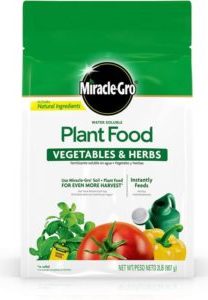
- 18-18-21 NPK
- Liquid Feed
- Fast Acting
I would be remiss not to include Miracle-Gro Water Soluble Plant Food Vegetables and Herbs in the list, because despite all the organic options now available for gardeners, Miracle-Gro’s line of liquid feed products is still one of the most widely available and fast acting fertilizers on the market.
While any of the main Miracle-Gro liquid plant food products (all-purpose, tomato, bloom booster, etc.) will help your zucchini plants grow, their fertilizer for vegetables and herbs is specially formulated for vegetables like zucchini.
Miracle-Gro Water Soluble Plant Food Vegetables and Herbs consists of solid crystals which need to be dissolved in water before applying. The result is a liquid fertilizer with generous, yet balanced amounts of nitrogen, phosphorus, and potassium, as well as micronutrients such as calcium, manganese, iron, sulfur, and zinc. However, it also has the trace minerals boron and molybdenum which are not found in other fertilizers, ensuring a well-balanced mix for any of your vegetables.
If you can’t find Miracle-Gro Water Soluble Plant Food Vegetables and Herbs, you can substitute with Miracle-Gro Water Soluble Tomato Plant Food. Both have the same NPK of 18-18-21 and almost identical micronutrient profile.
How to apply: Apply every 1 to 2 weeks. Mix 1 1/2 tablespoons per 1 1/2 gallons of water and soak the soil around your zucchini plants. You can also use it to feed young zucchini seedlings, but don’t soak the soil. I like to use quarter strength to half strength Miracle-Gro for very young seedlings. After the young plants get established with multiple leaves, use the recommended amount.
7. Burpee Organic Tomato and Vegetable Granular Plant Food
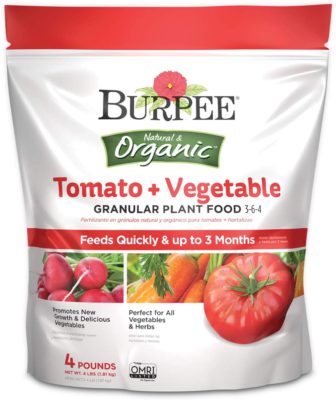
- 3-6-4 NPK
- Continuous Release and Fast Acting
- Organic
- Contains Beneficial Microbes
With over 144 years of experience as a seed company, you can trust Burpee to formulate an organic fertilizer that will provide everything your zucchini needs from sowing to harvesting. In fact, Burpee provides instructions on how to use their organic plant food in your seed starting mix as well as in the garden.
With an NPK of 3-6-4, there’s no risk of Burpee’s organic fertilizer burning your zucchini plants if you follow the instructions. It starts working immediately, but in its granular form it will also last months before needing to be reapplied.
Burpee Organic Tomato and Vegetable Granular Plant Food is one of the few mainstream fertilizers on the market that includes beneficial microbes in its fertilizer granules, so you can use it even in sterile potting mix. As mentioned earlier in the article, beneficial microbes break down organic matter so that plants can absorb the nutrients from them. Healthy soil will always have plenty of beneficial bacteria and fungi, ensuring a robust soil ecosystem for your zucchini to grow in.
How to apply: Feeds for up to 3 months, but you can reapply every 2 months. Always water after applying Burpee’s organic granular plant food. For seed starting mix: Mix 2 cups per cubic foot of seed starting mix. For planting zucchini seeds in-ground: Apply 1 cup of plant food for every 10 sq ft into the top few inches of soil. Before transplanting zucchini seedlings outside: Mix 1 cup per 10 sq ft into the top 4 to 6 inches of soil. For preparing container and raised bed soil: Mix 1 1/2 cups per cubic feet of soil or potting mix. For feeding established zucchini plants: Top dress with 1 1/3 cups per 10-foot row of of zucchini plants and mix into the top few inches of soil.
8. Miracle-Gro Performance Organics Edibles Plant Nutrition Granules
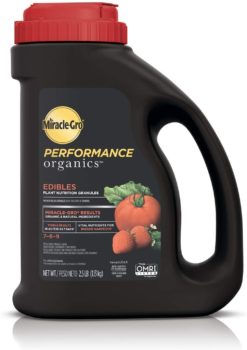
- 7-6-9 NPK
- Continuous Release
- Organic
Miracle-Gro has its own line of organic fertilizers in addition to conventional fertilizers. Like many mainstream organic fertilizers, Miracle-Gro Performance Organics Edibles Plant Nutrition Granules is a gentle formula that can be used for any kind of vegetable, but its NPK ratio is ideal for zucchinis, which need a balance of nitrogen, phosphorus, and potassium.
Miracle-Gro’s organic formula is derived from natural sources like sunflower hull ash, feather meal, soybean meal, bone meal, and rock phosphate. It also has essential micronutrients such as calcium, magnesium, and sulfur.
It’s very easy to use, very similar to their Shake ‘N Feed fertilizer, and slowly releases nutrients over the course of a month. You can also mix it with potting mix before growing zucchini in containers.
How to apply: Can be reapplied every 4 to 6 weeks, and should be watered in after every application. For established zucchini plants in ground or containers: Shake evenly onto the soil, approximately 1 cup per 25 sq ft, then mix into the top 1 to 3 inches of soil. To prepare containers for zucchini seeds or transplants: Apply 2 tablespoons per gallon of potting mix, and mix well before planting.
Related Questions About Fertilizing Zucchini
What Is NPK? What Do the Numbers Mean?
NPK stands for the chemical symbols of the three major nutrients plants need: Nitrogen (N), Phosphorus (P), and Potassium (K). I’ve already gone over in more detail about NPK fertilizers, but briefly:
The numbers refer to the percentage of each nutrient by weight. So, for example, a 30-30-30 fertilizer would be 30% nitrogen, 30% phosphorus, and 30% potassium, a very strong fertilizer. Meanwhile, a 3-0.3-1 fertilizer would only have 3% nitrogen, 0.3% phosphorus, and 1% potassium, being a very gentle fertilizer that can be used more liberally without worrying about overfertilization.
Plants need other nutrients in smaller quantities, such as calcium, magnesium, sulfur, and trace minerals like iron, zinc, and copper.
How Often Should I Fertilize Zucchini Plants?
This depends on what fertilizer you’re using. Most liquid fertilizers (both organic and conventional) require feedings every 1 to 2 weeks, although late in the season I typically apply my liquid fertilizers less often. Slow-release or continuous-release fertilizers can be applied much less frequently, anywhere from every month to every 3 months, depending on the brand.
Are There Plant-Based Fertilizers for Zucchini?
Traditional plant-based fertilizers like alfalfa meal and kelp meal typically have a very low NPK, with little to no phosphorus, so it may require heavier applications to get similar results when growing zucchini, which needs a lot of nutrients and adequate phosphorus. However, the benefit of using fertilizers based on seaweed, kelp, phytoplankton, etc. is that they have higher mineral content that they’ve absorbed in the oceans.
It’s recommended that you supplement your plant-based vegan fertilizers with natural rock phosphate, which will provide the phosphorus that is usually lacking in plant-based fertilizers. Down to Earth’s Organic Vegan Fertilizer Mix already includes some rock phosphate.
Here are some good choices for plant-based fertilizers:
- Down to Earth Organic Vegan Fertilizer Mix (3-2-2 NPK)
- Down to Earth Organic Alfalfa Meal Fertilizer Mix (2.5-0.5-2.5 NPK)
- Blue Planet Nutrients Liquid Seaweed for Plants (0.3-0.2-1 NPK)
- Supplement: Down To Earth All Natural Organic Rock Phosphate Fertilizer (0-3-0 NPK)
Is Organic Fertilizer Always Better?
I always try to go organic, although I still use some conventional fertilizers in my garden (and pretty much have to for hydroponics). Conventional fertilizers are not inherently dangerous, they’re kind of like multivitamins and protein shakes for plants, ready to be instantly taken up by their roots. Plants grown with regular fertilizers are completely safe to eat.
However, the main danger with conventional chemical fertilizers comes with overuse. Constant, heavy fertilizing with conventional fertilizers can lead to a buildup of salt in the soil. Moreover, since most of those fertilizers are liquid-based, they will wash away with the rain, which is why they always recommend weekly or bi-weekly feedings. For the average home gardener, this is not much of a problem, but for large-scale gardening and farming, it’s always recommended to get your soil tested for salinity regularly.
Can You Fertilize Zucchini Plants Too Much?
Yes. Though fertilizer manufacturers give some leeway in their recommendations (e.g. if you accidentally add 2 tablespoons instead of 1 1/2 tablespoons of Miracle-Gro plant food, your zucchinis will probably still survive) it’s possible to overfertilize your plants.
Overfertilization can harm and even kill your zucchinis. If you have a dog, you’ve probably seen the result on your lawn with those yellow patches of dead grass where your dog pees. Urine has very high concentrations of nitrogen, enough to easily overwhelm and “burn” the roots.
It’s always better to underfertilize than overfertilize. Fortunately, as long as you follow the directions on the package of whatever fertilizer you’re using, it’s unlikely you will cause fertilizer burn. Some companies even guarantee it. As a general rule, organic fertilizers are less likely to lead to overfertilization than conventional chemical fertilizers, since the latter breaks down more slowly using soil microbes.
The Most Common Cause of Overfertilization
Not counting accidentally adding too much fertilizer, the most common cause of overfertilization is when you think your zucchini has a nutrient deficiency, so you add more fertilizer, then add more, and keep adding more, thinking it’s still not enough, until you end up killing your zucchini plant. Before adding fertilizer to address a deficiency, you should always find out if there is anything else that could cause a problem. For example, is there a disease causing your leaves to discolor? Or are you underwatering or overwatering your zucchini? It’s easier to adjust other factors than to take out fertilizer you’ve added.

